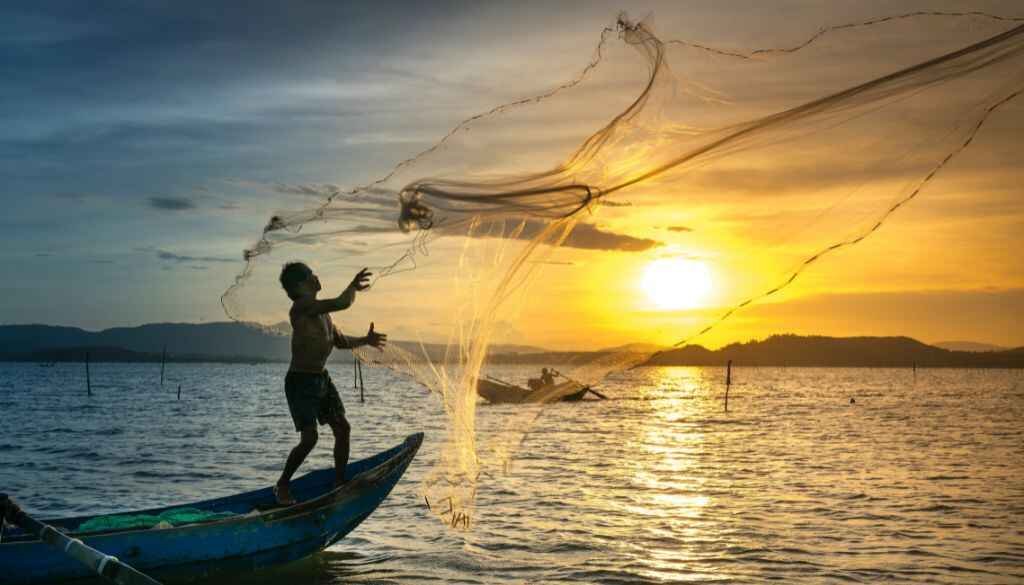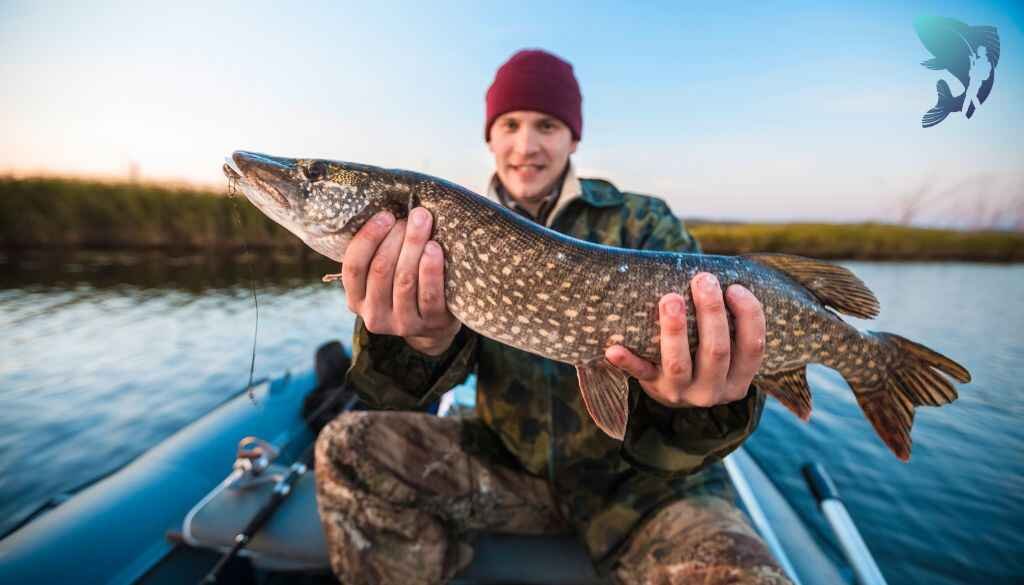Introduction
In a digital transformation era, comprehending traditional practices, such as fiskning can offer useful insights into both the past and future.
For cybersecurity enthusiasts and IT professionals, studying fiskning techniques gives them an interesting view on how security tactics and methods have evolved.
This blog entry delves into various aspects of fiskning from its beginning to the current times in terms of cyber security
What does Fiskning Mean?
Fishing also known as fiskning is an ancient art of catching fish through different methods. Historically, fishing has played a significant role in subsistence and culture for many communities across the globe. The tools and techniques differ considerably over time even though the main objective remains unchanged that is to catch fish.
Traditional ways of fishing have been replaced by advanced commercialized methods with the advent of modern technology. However, there are still various forms through which the art of fiskning lives on; from recreational fishing to small scale commercial fishing.

The history of Fiskning
Like history of humans who lived along thousands of waterways used by people since time immemorial, so is that rich background on Fiskning. Some earliest archaeological evidence indicates Upper Paleolithic period around 40000 years ago marking birth date for some fishermen activities. Ancient Egyptians, Greeks and Romans had their own unique fishing methods that played a very crucial role in their nutrition during early ages as well as their economy development.
During medieval Europe, fishermen developed more specialized tools and techniques such as hooks made from locally available materials while others such nets or traps were made out of reeds etc…. With advent seafaring ,fishing scope expanded leading different catch targets thus diverse market opportunities.
The progress from societies industrially was paralleled by developments in fishing technology like steam-powered boats which aided trawling nets but not forgetting refrigeration hence large-scale commercial fishing became possible because it could be safely transported far distances.Despite these advancements however traditional fiskning has not disappeared but rather continues to shape cultural identities and offers a sustainable alternative to modern practices.
Traditional Fiskning Methods
Before modern technology traditional fiskning relied on manual skills and crude tools. Below are some of the classic techniques that have stood the test of time:
• Hand Line Fishing
This is one of the simplest and oldest methods, involving using a single fishing line with one or more hooks thus requiring less equipment.
• Spear Fishing
Early fishers would thrust at fish in shallow waters using a spear or trident. This method requires skill and precision.
• Net Fishing
Enormous nets like seine nets or cast nets are used to catch schools of fish. It is effective for capturing large volumes of fish.
• Trapping
• Fish traps made from wood, reeds, or other materials are placed in water to capture fish. These traps often rely on the movement patterns of the fish itself.
The Evolution of Fiskning
Nowadays, fiskning has evolved from these traditional methods into more sophisticated ones due to technological advancements. Modern day fishing involves electronics, advanced materials, as well as artificial intelligence among others. Here is how fiskning has changed:
Electronic Fish Finders
Devices that use sonar technology for finding fish under water making it more efficient and targeted.
Modern Fishing Rods and Reels
These tools are now made out high tech fabrics such as carbon fiber that make them stronger , long lasting but flexible enough.
Fiskning: A Culture of Fishing
Fishing, as the old saying goes, is more than just about catching food. Fishing practices are deeply rooted in rituals, beliefs, and customs that embody the heritage and traditions of different cultures from around the world. In this way, fishing festivals often take place during seasonal fish migrations in fishing villages along the coast; these events may include communal feasts, music and dance to celebrate Mother Nature’s offerings from the sea. Furthermore, they strengthen community ties while passing down ancestral knowledge and skills to younger generations.
In many indigenous societies, fiskning involves spiritual ceremonies where water bodies are revered through fishing. Certain taboos and beliefs restrict where when and how one can fish for instance furthering a sustainable relationship with nature. Similarly folktales and literature in Scandinavian countries commemorate fiskning thus emphasizing its historical significance and mastery required in performing it.
Even nowadays recreational fishermen find peace within nature by engaging in this type of occupation together with their families. For example, competitions onshore or tournaments are populated by people coming from various backgrounds which start at one particular point and turn into a common cultural environment where everyone may exchange his/her experiences stories or even some techniques used during such a way of spending time.
It’s all these things for some people who have made their livelihoods out of it; for others it’s a social practice that brings them closer to nature; yet for others it’s just an activity done during free time but no matter what “fiskning” remains important in human context influencing those involved in it most directly.
The Ecosystem Impacts on fiskning

Ecosystem Impact
The practice of fiskning especially when conducted commercially today has significant effects on ecosystems. Overfishing is paramount among concerns since this activity depletes key species resulting into instability of marine food chains.
The decline does not only affect targeted species but also predators as well as prey found within an ecosystem thereby making marine system imbalanced. Besides, bycatch which is unintentional capturing of non-target organisms like turtles, dolphins and seabirds makes the matter worse and leads to unintended ecological damage.
Destructive fishing techniques such as bottom trawling also compound this problem as they destroy sea floor habitats. The nets of trawlers scrape across the ocean floor tearing apart delicate ecosystems including coral reefs and sea grass beds that serve as breeding sites and feeding grounds for countless marine species. Consequently, habitat destruction causes loss of biodiversity and a decrease in ecologically important species.
Ecological impacts
On the contrary, sustainable fishing practices seek to reduce ecological impacts while encouraging fish populations’ recovery. This may include selective gear types, closed fishing seasons, marine protected areas etc which help maintain marine habitats over long time especially those associated with fish breeding. By limiting catches and implementing conservation measures therefore it would be possible for the fishing industry to safeguard aquatic ecosystems whilst catering for its economic needs.
Addressing International Ecosystem Impact
International cooperation together with policy-making are required to address this kind of problem caused by fiskning on ecosystems. Therefore, agreements such as United Nations Sustainable Development Goals call for sustainability in oceans use and their resources while Marine Stewardship Council certificates are concerned with sustainable utilization of fishery resources thus encouraging consumers to purchase seafood obtained from eco-friendly methods only.
Ethical Problems with Fiskning
Fiskning is fraught with a range of ethical problems, which relate to the wider issue of man’s relationship to nature. It is not easy to balance human needs and marine biodiversity preservation. This practice raises moral questions by overfishing for commercial purposes thereby accelerating the decline of important marine ecosystems elements. The continuation of this kind of behavior ends up in long-term ecological destruction, raising issues that pertain to our obligation towards future generations.
Equally important is the welfare aspect, especially concerning aquatic organisms. Types such as trawling, longlining and use of nets have been associated with considerable pain on fish and other sea creatures used in fiskning. Some people claim that more humane methods should be adopted during catching so as to minimize suffering as per animal rights principles.
Moreover, there is an ethical dilemma surrounding the issue of bycatch. Non-targeted species are usually captured and discarded when fishing which leads to loss of biodiversity or concerns about wastage and respect for all life forms. This challenge highlights the need for more refined fishing techniques which are sustainable.
Impacts on local communities
Additionally, fiskning has impacts on local communities: In terms of ethics, fair treatment should protect small-scale fishermen whose lives depend on fishing while at the same time preventing disproportionate impacts from overfishing or unfair practices by big corporations in fishing sector such as through granting an equal access right to everyone into fishery zones and fair distribution among men involved in ethical fishing standards.
Finally; consumer trust must be retained through truthful reporting and labeling for ethical consumption.Typically,Fisheries need to give precise information regarding their practices as well as product sources.Truthful labeling can assist people find products that align with their ethics while certifications confirming that seafood was sustainably harvested can be useful.
In conclusion, these encompass ecological welfare justice social justice aspects community interests consumers’ choice amongst others.The resolution will require collective efforts from fishermen industry stakeholders policy makers and consumers to ensure that fishing practices are sustainable, humane and just.
Fiskning in Cybersecurity Context
It is funny that, however, the term “fiskning” came to be adopted within cybersecurity although with a different spelling of phishing. Phishing involves tricking individuals into providing sensitive information through deceptive means just like fiskning is done traditionally for fish. This is how traditional fiskning principles apply to modern cybersecurity:
• Bait and Lure Techniques
As fishermen use bait to attract fish, so are cybercriminals using desirable emails and websites to lure their victims.
• Trapping
Cyber traps such as malware or malicious links are also used for capturing sensitive data.
• Evolution of Tactics
The evolution of both fiskning as well as phishing has been towards greater sophistication. In cybersecurity, this implies more complex phishing attacks that are harder to detect and prevent.
Modern Fiskning Technology
The integration of technology into modern fiskning has revolutionized the industry, enhancing efficiency, sustainability, and safety. Advanced technologies like GPS and sonar ensure that fishermen get accurate location of fish stocks while minimizing time and effort required for locating them before they can be captured. By reducing unnecessary fishing efforts this precise tracking helps minimize ecological footprint and avoiding sensitive habitats.
Electronic monitoring systems
In addition, electronic monitoring systems are being incorporated as tools for promoting transparency and accountability in fishing practices. Such systems could involve cameras on fishing vessels as well as sensors which monitor catch and bycatch thus helping check compliance with regulations besides reducing illegal unreported unregulated (IUU) fishing activities. It also helps in responsible management of fish resources hence conserving marine biodiversity.
Equipment design has also seen some innovations resulting in development of more selective fishing gear such circle hooks; turtle excluder devices among others that help reduce bycatch thus minimizing non-target species’ mortality rates. These technological advancements contribute to sustainable fiskning practices which support long-term health of marine ecosystems.
Blockchain technology
Moreover blockchain technology is an emerging tool in the fishing industry that offers transparency and traceability across the supply chain. Blockchain records every journey of each catch from ocean to plate ensuring that seafood products are sustainably and ethically sourced thus supporting responsible fisheries’ choices by consumers.
Autonomous Underwater vehicles (AUVs)
Additionally, automation and artificial intelligence have increasingly become important in modern fiskning. Drones as well as autonomous underwater vehicles (AUVs) can cover extensive areas of oceans, collect fish population data, and monitor environmental conditions. This data can be processed through AI-driven analytics systems to give insights into fish behavior as well as ecosystem health thereby improving decision-making processes.
Consequently, incorporation of technology in fiskning has numerous advantages ranging from increased operational efficiency to sustainability and accountability. Technological innovations will be essential to solve problems such as overfishing and marine conservation, which the industry is grappling with today.
Fiskning Challenges
The threaten marine ecosystems
Despite technological advancements and sustainability efforts, fiskning is faced with major challenges that threaten marine ecosystems and individuals dependent on fishing for their livelihoods. One of these major challenges includes overfishing where fish are harvested at a higher rate than they can reproduce resulting in depletion of fish stocks. Overfishing not only affects specific species but also disturbs marine ecosystems balance hence leading to long-term ecological impacts.
IUU fishing
Another major obstacle towards conservation and fairness in the fishing sector is illegal, unreported and unregulated (IUU) fishing. Often IUU fishing occurs without respect for international laws and regulations making it difficult to effectively manage and protect fish populations. This also makes vulnerable legal fishers’ economic stability who follow sustainable practices.
Non-target species bycatch which is accidental capture remains a persistent challenge. Many of these unintended catches are discarded resulting in death of the animals thus impacting marine biodiversity as well as ecosystem health. Despite efforts at developing selective fishing gear, bycatch continues to pose a major problem.
Climate change is increasingly affecting fiskning through changes in ocean temperatures, currents, and ecosystems. Such changes can make harder for fishermen to locate and sustainably harvest fish when they affect the distribution as well as abundance of fish populations. Ocean acidification which is another consequence of climate change affects the reproductive capabilities and health of marine life thereby further complicating the sustainability of fish stocks.
Social and economic challenges
Furthermore, social and economic challenges such as unfair distribution of resources among others inhibit promotion of responsible and sustainable fishing practices. It therefore becomes necessary that these issues are addressed through ensuring equal access to the fisheries areas as well as supporting community based fisheries management.
Overcoming them necessitates international cooperation, strong regulatory frameworks, innovative technological solutions, and working together with all stakeholders engaged actively in solving these problems. By addressing multifaceted challenges in fiskning we can move forward to a future where our mannerisms about fishing are both answerable and adaptable.
What Experts Say
Because marine ecosystems must be kept up in balance by advanced technology blending with stringent legislation; experts on marine biology at present like Dr.Maria Lopez who says thus,” Cutting-edge technologies such Artificial Intelligence (AI) & blockchain adoption not only enhance fishing process efficiencies but equally assure seafood traceability plus sustainability; hence overfishing & IUU activities may be significantly reduced via greater transparency within supply chains.”
Dr. James Kim
In the same way, Dr. James Kim who is a professional in fisheries management emphasizes that, “The complexities associated with the fishing sector necessitate concerted world efforts. There ought to be strong regulatory frameworks and technologies for effective monitoring and control of fish stocks.” Only through international collaboration and adherence to sustainable practices can we ensure the long-term health of our marine resources.
Additionally, however she stresses the need for continual research as well as innovation. “While there have been notable strides towards developing more selective gear and surveillance systems, ongoing research is needed to achieve even greater improvements. Understanding fish behavior, climate change impacts, and marine ecosystem dynamics will enable us devise more efficient, adaptable fishing strategies.”
Consequently, these experts reveal that technology must go hand in hand with regulation and international cooperation if fishing industry has to survive over time. If followed by the industry it would make for a sustainable and resilient future for marine ecosystems alongside communities that depend on them.
Conclusion
Looking into Fiskning, from its traditional roots to its modern applications in cybersecurity provides an interesting perspective on the development of human creativity. The correlation between traditional fiskning techniques and contemporary phishing methods for those who love cybersecurity and IT professionals are a great source of ideas on how we can enhance our protection against cyber threats.
The Changing Cybersecurity Landscape: Upcoming Blog Post
Stay tuned to find out more about the changing face of global cybersecurity. Do check back soon as we will be posting our next blog article with comprehensive resources and expert advice.
FAQs About Fiskning
What is fiskning?
Fishing, also known as fiskning, refers to the act of catching fish and other water species. It could be undertaken due to various reasons such as making profits through commercial means, leisure or just sustaining existence.
Why is sustainable fiskning important?
It ensures that fish population as well as marine ecosystems’ health in the long run. By adopting practices that minimize environmental impact and avoid overfishing, we can preserve biodiversity and secure availability of marine resources for future generations.
What are some common sustainable fiskning practices?
There are various ways of carrying out this type of fishing which include selective gear types that reduce bycatches; implementing catch limits or quotas; respecting seasons; establishing protected areas among others. Such measures help in preserving fish life in oceans.
How does technology improve modern fiskning?
Technology improves modern fishing through GPS navigation tools, sonar systems, electronic monitoring systems, and blockchain among others. These innovations increase efficiency and transparency thus promoting sustainability and ethicality within fisheries management.
What is phishing in cybersecurity?
Are you aware they always say ‘Phishing’ when they mean ‘FRAUD’?









